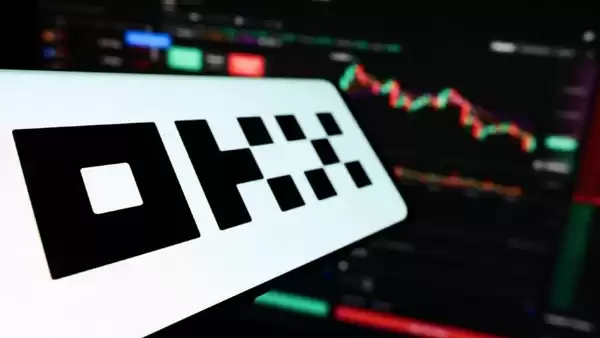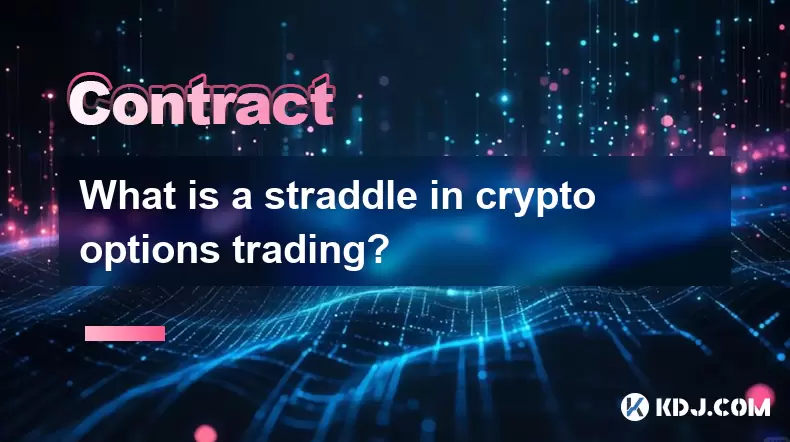-
 Bitcoin
Bitcoin $115700
0.65% -
 Ethereum
Ethereum $3785
3.93% -
 XRP
XRP $3.033
1.78% -
 Tether USDt
Tether USDt $1.000
0.04% -
 BNB
BNB $770.7
0.50% -
 Solana
Solana $168.4
0.56% -
 USDC
USDC $1.000
0.02% -
 TRON
TRON $0.3403
1.83% -
 Dogecoin
Dogecoin $0.2113
3.84% -
 Cardano
Cardano $0.7539
2.34% -
 Hyperliquid
Hyperliquid $38.84
1.28% -
 Sui
Sui $3.700
6.88% -
 Stellar
Stellar $0.4069
2.56% -
 Chainlink
Chainlink $17.80
6.93% -
 Bitcoin Cash
Bitcoin Cash $573.5
0.73% -
 Hedera
Hedera $0.2478
1.24% -
 Ethena USDe
Ethena USDe $1.001
0.00% -
 Avalanche
Avalanche $22.42
1.58% -
 Litecoin
Litecoin $120.6
2.58% -
 UNUS SED LEO
UNUS SED LEO $8.962
-0.29% -
 Toncoin
Toncoin $3.296
2.09% -
 Shiba Inu
Shiba Inu $0.00001251
1.77% -
 Uniswap
Uniswap $9.982
3.75% -
 Polkadot
Polkadot $3.710
1.55% -
 Dai
Dai $1.000
0.00% -
 Bitget Token
Bitget Token $4.425
1.98% -
 Monero
Monero $265.2
-7.14% -
 Cronos
Cronos $0.1472
2.44% -
 Pepe
Pepe $0.00001073
2.66% -
 Aave
Aave $270.9
4.17%
How to play OKX leveraged trading
For successful leveraged trading on OKX, traders should thoroughly understand the platform's trading interface, flexible leverage options, and essential risk management tools.
Nov 12, 2024 at 01:09 am

How to Play OKX Leveraged Trading: A Comprehensive Guide
Step 1: Understanding Leveraged Trading
Leveraged trading involves utilizing borrowed funds from an exchange to amplify the potential returns on one's initial investment. By using leverage, traders can multiply their trading capital, increasing their profit if the market moves in their favor. However, it's crucial to remember that leverage also amplifies potential losses.
Step 2: Choosing a Leveraged Trading Exchange
Selecting a reliable and reputable leveraged trading exchange is paramount. OKX, a leading cryptocurrency exchange known for its robust security and extensive trading options, emerges as an excellent choice for leveraged trading. OKX offers a user-friendly interface, low trading fees, and competitive leverage options, making it a suitable platform for both novice and experienced traders.
Step 3: Funding Your Trading Account
Before engaging in leveraged trading, one must fund their OKX trading account. Deposits can be made via various methods, including bank transfers, credit/debit card payments, and cryptocurrency transfers. It's important to verify the supported fiat currencies and cryptocurrencies before selecting a funding option.
Step 4: Familiarizing with the OKX Trading Interface
OKX's trading interface is designed to streamline the trading process. It features an intuitive layout, clear charts, and customizable indicators, enabling traders to analyze market movements and make informed decisions. Understanding the interface's various functionalities, such as order placement, position management, and risk management tools, is crucial for successful leveraged trading.
Step 5: Selecting the Underlying Asset
OKX offers a wide range of cryptocurrencies available for leveraged trading. Traders can choose from popular coins like Bitcoin, Ethereum, and Binance Coin to more altcoins, allowing them to capitalize on trends in different cryptocurrency markets. Researching and analyzing the fundamental and technical aspects of the chosen asset is essential for making well-informed trading decisions.
Step 6: Determining Leverage Amount
OKX provides flexible leverage options, ranging from 1x to 125x. Higher leverage increases the potential for profits and losses. Novice traders are advised to start with lower leverage levels until they gain experience and a better understanding of market dynamics. Advanced traders may utilize higher leverage for potentially higher returns but must be aware of the associated risks.
Step 7: Placing a Leveraged Trade
To execute a leveraged trade on OKX, one must specify the trading direction (long or short), leverage amount, and position size. A long position signifies an anticipation of price appreciation, while a short position bets on price depreciation. Determining the position size involves a balance between potential return and risk tolerance.
Step 8: Managing Risk
Leveraged trading requires diligent risk management practices. Utilizing stop-loss orders and take-profit limits can help mitigate potential losses and protect unrealized gains. Monitoring market conditions and adjusting positions accordingly is also essential. Moreover, it's wise to avoid holding leveraged positions overnight due to the potential for significant price fluctuations while the market is closed.
Step 9: Monitoring and Closing the Position
OKX offers advanced trading tools and analytics to allow traders to monitor their leveraged positions in real-time. Timely profit-taking and loss-cutting are crucial to maximizing returns and minimizing losses. Analyzing market trends, assessing position performance, and adjusting strategies based on evolving conditions will contribute to successful leveraged trading.
Disclaimer:info@kdj.com
The information provided is not trading advice. kdj.com does not assume any responsibility for any investments made based on the information provided in this article. Cryptocurrencies are highly volatile and it is highly recommended that you invest with caution after thorough research!
If you believe that the content used on this website infringes your copyright, please contact us immediately (info@kdj.com) and we will delete it promptly.
- Bitcoin's Wild Ride: Bollinger Bands, $117K, and What's Next?
- 2025-08-08 00:30:12
- Ripple, Rail, and Stablecoin Payments: A $200M Power Play
- 2025-08-07 22:50:12
- Punisher Coin Presale: The Next $Trump? Aiming for 100x Gains!
- 2025-08-07 22:50:12
- Riding the Crypto Wave: Presale Cryptos, Cold Wallets, and the BTC Bull Run
- 2025-08-07 23:10:12
- Crypto's Wild Ride: Punisher Coin, Popcat, and the Meme Coin Mania
- 2025-08-07 23:10:12
- Bitcoin Price, XRP Prediction, Cryptocurrency: Navigating the Wild West of Digital Assets
- 2025-08-07 23:15:12
Related knowledge

What triggers a liquidation event on a Coinbase futures position?
Aug 08,2025 at 01:15am
Understanding Futures Contracts on CoinbaseFutures contracts on Coinbase allow traders to speculate on the future price of a cryptocurrency, such as B...

What is a straddle in crypto options trading?
Aug 07,2025 at 11:15pm
Understanding the Basics of a Straddle in Crypto OptionsA straddle is an options trading strategy used when a trader expects significant price movemen...

How is the funding rate calculated for perpetual futures?
Aug 07,2025 at 11:36pm
Understanding the Basics of Perpetual FuturesPerpetual futures are a type of derivative contract that does not have an expiration date, allowing trade...

What programming languages are used for smart contracts?
Aug 07,2025 at 06:07pm
Understanding Smart Contracts and Their Execution EnvironmentSmart contracts are self-executing programs deployed on blockchain networks that automati...

What is a short position in crypto contracts?
Aug 07,2025 at 11:42pm
Understanding the Concept of a Short Position in Crypto ContractsA short position in crypto contracts refers to a trading strategy where a trader prof...

What is a long position in crypto contracts?
Aug 07,2025 at 06:29pm
Understanding the Concept of a Long Position in Crypto ContractsA long position in crypto contracts refers to a trading strategy where a trader buys a...

What triggers a liquidation event on a Coinbase futures position?
Aug 08,2025 at 01:15am
Understanding Futures Contracts on CoinbaseFutures contracts on Coinbase allow traders to speculate on the future price of a cryptocurrency, such as B...

What is a straddle in crypto options trading?
Aug 07,2025 at 11:15pm
Understanding the Basics of a Straddle in Crypto OptionsA straddle is an options trading strategy used when a trader expects significant price movemen...

How is the funding rate calculated for perpetual futures?
Aug 07,2025 at 11:36pm
Understanding the Basics of Perpetual FuturesPerpetual futures are a type of derivative contract that does not have an expiration date, allowing trade...

What programming languages are used for smart contracts?
Aug 07,2025 at 06:07pm
Understanding Smart Contracts and Their Execution EnvironmentSmart contracts are self-executing programs deployed on blockchain networks that automati...

What is a short position in crypto contracts?
Aug 07,2025 at 11:42pm
Understanding the Concept of a Short Position in Crypto ContractsA short position in crypto contracts refers to a trading strategy where a trader prof...

What is a long position in crypto contracts?
Aug 07,2025 at 06:29pm
Understanding the Concept of a Long Position in Crypto ContractsA long position in crypto contracts refers to a trading strategy where a trader buys a...
See all articles

























































































